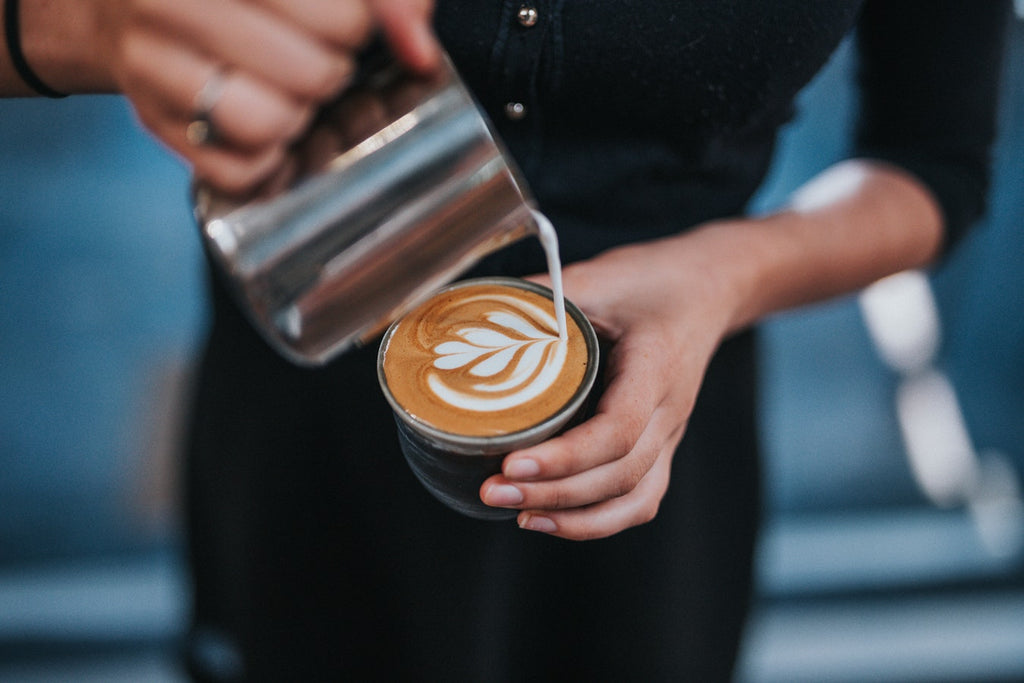
Have you ever been at a coffee shop and had to ask the barista exactly what a Flat White is? Well, you’re not alone. In fact, Flat Whites tend to confuse a lot of people! For instance, some coffee shops serve a Flat White as a small Latte, whereas traditionalists like myself view them as completely different drinks.
As a barista, I love Flat Whites as they allow me to create a drink that is specifically different to the standard Cappuccino and Latte, but also as a roasting expert as it gives me a way to enhance the flavour of the bean itself, while making a milky coffee.
Optimising the roast and flavour of the coffee is always my focus, but often the addition of milk can impair this. For example, a medium roasted coffee standing alone with no added milk can bring forth such a depth of flavours - sweetness, acidity, a cocoa-y hint of bitterness - that can then all but disappear as soon as foamed milk is added. My challenge is to produce a coffee that retains the depth of flavour of the roast and melds seamlessly with the milk to produce the optimum balance.
What exactly is a Flat White?
The drink originated in the 1980s in New Zealand or Australia - although this is pretty hotly debated! Suffice to say, it was developed around then somewhere in the Antipodes. There is also some argument over what exactly constitutes a Flat White, but for me it’s the following:
1: Full fat milk is textured until it reaches a velvet micro-foam (not a stiff froth)
2: The textured milk is then poured over the espresso and folded through the whole drink, leaving no layer separation between liquid coffee and textured milk.
3: It can be made with a single or double shot of espresso, as long as the milk is correctly proportioned - the coffee needs to do most of the talking, not the milk.
A Flat White should be served in a medium size (8-9oz), so it’s bigger than a Macchiato but smaller than a Latte.
Making a GOOD Flat White
It’s about packing as much taste as possible into a small package. The coffee should be high quality, not over roasted, dosed and ground correctly to ensure the perfect extraction of the coffee liquor.
A Flat White uses less milk and less foam. The foam it does use is microfoam, which has tiny bubbles (hence Flat White) and so it uses proportionately more coffee than a Latte. The texture should feel velvety and there should be a natural creamy sweetness.
Which coffee works best?
Really depends on your personal taste. I like a little fruity acidity to help cut through the milk but any of these are real crackers:
1: South American Blend (sweet and mild)
2: Skybury (rich and creamy)
3: Peru Tunki (milk chocolate praline)
4: Excelso Blend (a little different with a naughty punch)
5: Cuban Serrano (great Mocha hit)
6: Java Blawan (awesome dark cocoa flavour)
Different coffees change the final flavour
You need a coffee that works well with a velvety sweet textured milk. If you go for a coffee that's too fruity or acidic like, for example, some Kenyan blends, then you may get a curdled taste that’s not great.
The Flat White tends to soften some of the harsher taste profiles in coffee and amplify others, so a punchy smoky nutty Colombian turns milder with a hint of hazelnut chocolate, while the Tunki tastes like smooth praline.
Make it at home
It’s really simple to make a good Flat White at home with a decent home espresso machine. You don't need to foam the milk; you want the end result to be textured in a similar way to a Latte. with a little tight foam on top - something which most home espresso machines can handle.
Why I love a Flat White
I like milk in my coffee sometimes and the Flat White, if prepared correctly, can deliver the subtle characteristics of a well roasted coffee while at the same time offering a mild milky/creamy taste. For those roasters that burn their beans there is no place to hide!




